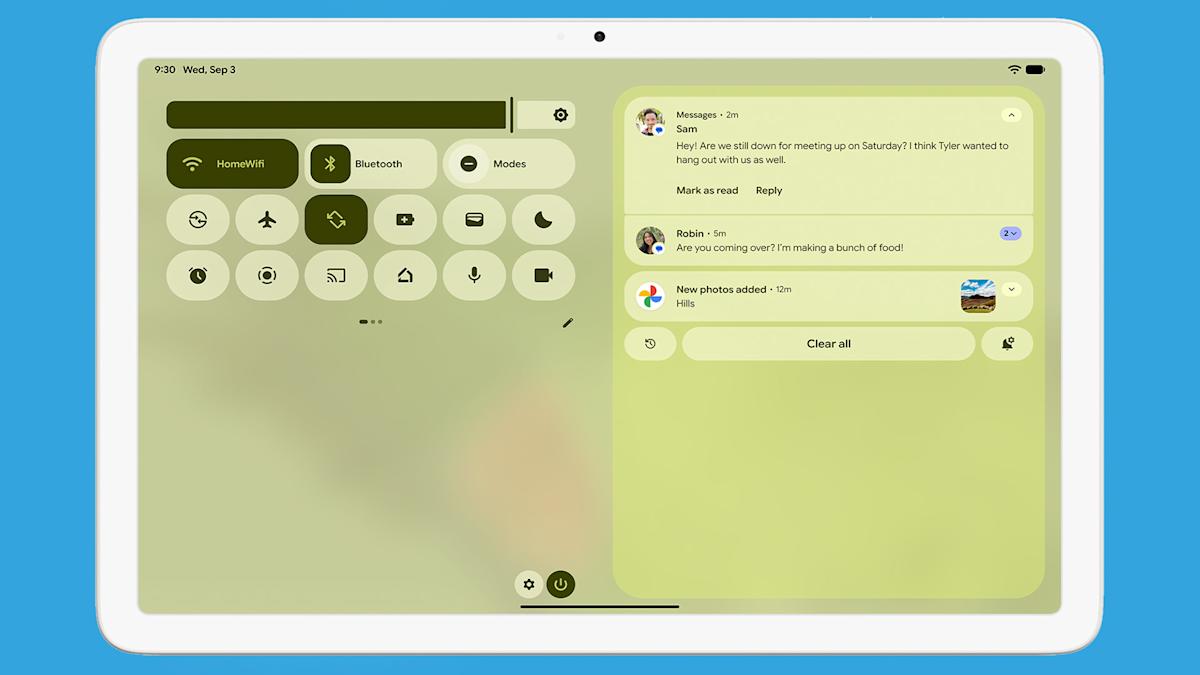Google Extends Material 3 Expressive UI and New Audio Features to Older Pixel Devices

Key Points
- Material 3 Expressive UI now available on Pixel devices released since 2021
- Live Effects add animated weather overlays to lock‑screen wallpapers
- Redesigned Quick Settings pane for easier navigation
- LE Audio Auracast enables simultaneous Bluetooth streaming to multiple listeners
- Pixel Buds Pro 2 to gain Adaptive Audio and Loud Noise Protection features
- New head‑gesture controls for calls and messages on Pixel Buds Pro 2
- Gboard’s on‑device AI can rephrase text and correct errors
- Androidify lets users create custom Android mascots using AI
Google is rolling out its latest Material 3 Expressive UI to Pixel phones released since 2021, adding Live Effects, revamped contact cards, and a redesigned Quick Settings pane. The update also brings new audio capabilities, including LE Audio Auracast that lets multiple listeners share a Bluetooth stream, and upcoming features for Pixel Buds Pro 2 such as Adaptive Audio and Loud Noise Protection. AI enhancements arrive in Gboard’s on‑device writing tools and the Androidify experience, which lets users create custom Android mascots using AI. The rollout broadens the reach of recent Pixel innovations across the Android ecosystem.
Material 3 Expressive UI reaches older Pixel models
Google has begun distributing the Material 3 Expressive user interface to any Pixel device launched since 2021, including the Pixel 6 and Pixel Tablet. The update introduces Live Effects that can overlay weather‑related animations on the lock‑screen wallpaper, and it gives users more control over the appearance of contact cards that appear during calls. Even users who rarely tweak Android’s look will notice a reworked Quick Settings pane designed for easier navigation.
New audio capabilities powered by LE Audio Auracast
The latest software drop also adds several audio upgrades. LE Audio Auracast enables a single Android handset to broadcast Bluetooth audio to multiple listeners simultaneously, allowing friends to share the same song or podcast. Users can generate a QR code for private broadcasts, a feature Google suggests could be used for silent‑disco style events. The Quick Share menu has been redesigned with a toggle for sending versus receiving files and a progress indicator for transfers.
Pixel Buds Pro 2 will receive additional software features, including Adaptive Audio, which automatically adjusts sound output based on the surrounding environment, and Loud Noise Protection, which caps volume to protect hearing. Two new gestures will let users accept or reject calls and messages by nodding or shaking their heads.
AI‑driven enhancements in Gboard and Androidify
Google continues to embed AI across its ecosystem. Gboard now offers on‑device writing tools that can rewrite text to be more formal, expressive, or concise, while also correcting spelling and grammar errors. The Androidify experience lets users upload a selfie, add prompts and accessories, and generate a personalized Android mascot using Google’s latest AI models. This tool is available both online and through a dedicated Play Store app.
Overall, the rollout extends recent Pixel innovations—originally showcased with the Pixel 10 series—to a broader user base, reinforcing Google’s commitment to evolving Android’s visual design, audio sharing capabilities, and AI‑powered productivity tools.